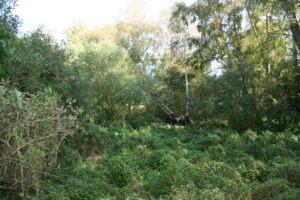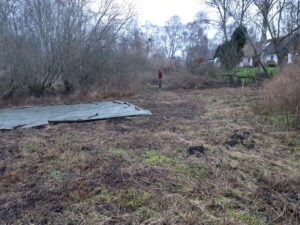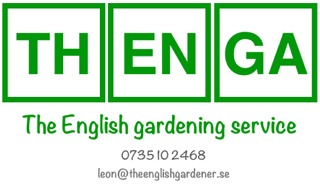Posted by: leon
Categories:
Permaculture

I live in Malmö, Sweden’s third largest city with a population of over 300,000 and growing due to its close position to central Europe via the Öresund bridge to Denmark. It lies in the Swedish county of Skåne which, has the most productive agricultural land of the country. The competing demand for land for housing and agriculture means prices for prime land close to the city is high. Thinking on a long-term basis, I ideally wanted to be able to reach a site where I could grow vegetables and plants for my gardening business by electric vehicle such as a cycle as well as a van. In the end, reality means choices are few so when a keen gardener friend suggested we try growing on marginal land that he owns with his partner about a 30 minute drive from the city, I jumped at the chance.
The land is marginal because it is a bog, or more properly, a mosse in Swedish. This mosse is not permanently under water with the experience of the past year telling us the water level varies by as much as two meters from summer drought to winter flooding. The water is not able to be drained because the water level of the nearest river in winter is artificially held back from the lake that this ground was once a part of. In winter flooding, the surface water on the mosse is the same as for the river. The area is an important habitat for wildlife and one of the few surviving in Skåne. Although it’s not protected in law, we wanted to preserve it as much as possible and be environmentally sensitive whilst also being pragmatic. Think of our approach as like someone significantly reducing meat in their diet rather than becoming vegan. We decided against the use of artificial chemicals and fertilisers but allowed ourselves the use of plastic for the polytunnel and weed proof membranes to clear the land of its well established vegetation.
 I had been reading about permaculture as a useful and environmental design tool for working with nature rather than against it, so when an online course in English became available for spring 2020, I signed-up. The idea was to use the course to help us design the area, including a polytunnel, to grow a wider variety of vegetables such as aubergines and tomatoes.
I had been reading about permaculture as a useful and environmental design tool for working with nature rather than against it, so when an online course in English became available for spring 2020, I signed-up. The idea was to use the course to help us design the area, including a polytunnel, to grow a wider variety of vegetables such as aubergines and tomatoes.
This blog is a retrospective description of what happened and about the course itself. So welcome to the experiment of Clabbe and Lee, two gardeners, each with quite fixed ideas on how things should be done, learning how to use permaculture design to get the best out of a Swedish mosse.
Top: dense summer vegetation on the mossa of willow scrub, birch trees, thick water-adapted vegetation plus mosquitoes
Above left: winter scene, tarpaulin covers site of polytunnel, running in an east-west direction
 I had been reading about permaculture as a useful and environmental design tool for working with nature rather than against it, so when an online course in English became available for spring 2020, I signed-up. The idea was to use the course to help us design the area, including a polytunnel, to grow a wider variety of vegetables such as aubergines and tomatoes.
I had been reading about permaculture as a useful and environmental design tool for working with nature rather than against it, so when an online course in English became available for spring 2020, I signed-up. The idea was to use the course to help us design the area, including a polytunnel, to grow a wider variety of vegetables such as aubergines and tomatoes.
